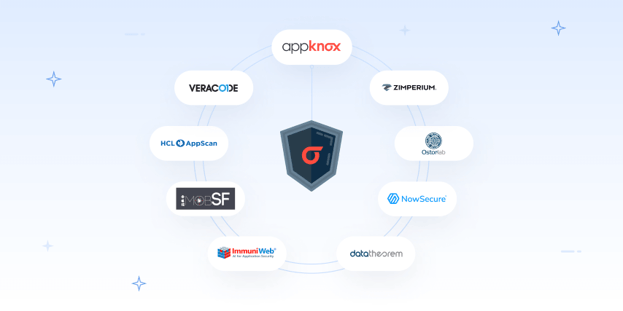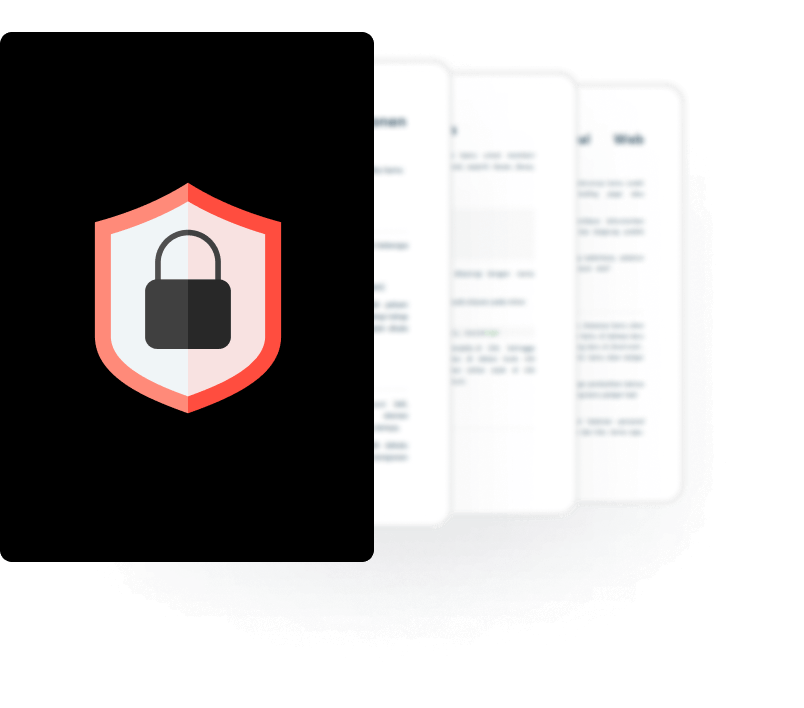
BLOG

BLOG
Before static code analysis tools were introduced, securing mobile applications often felt like playing catch-up. Development teams would spend months building features, only to discover critical vulnerabilities late in the release cycle. This last-minute scramble to fix security issues delayed product launches and stretched resources thin—adding more pressure on developers and security teams.
Security assessments have often been reactive, relying on manual reviews or dynamic tests that could only be performed once the app was fully developed. This approach left blind spots, with vulnerabilities lurking in the code that went unnoticed until the app was live, potentially exposing sensitive data to attackers.
SAST tools transformed this process by shifting security left, allowing teams to detect vulnerabilities early in the code.
By scanning source code before the app is executed, SAST tools allow organizations to fix issues before they become significant risks, ultimately saving time, money, and reputation.
When evaluating static analysis tools, it’s essential to consider factors that directly impact your organization’s security posture, operational efficiency, and long-term risk management. Here are the top factors to prioritize:
The core purpose of a SAST tool is to effectively identify security vulnerabilities. Look for tools with a strong record of detecting relevant issues while minimizing false positives. This ensures that time is spent addressing real security risks rather than sifting through noise.
The tool must support the mobile development languages and frameworks your team uses, whether that's Java, Swift, Kotlin, or others. Comprehensive language support ensures that all code is properly scanned for vulnerabilities, regardless of the tech stack.
The chosen tool must scale with your organization as the number of applications and developers grows. It must also be able to handle large, complex codebases and multiple scans at once, which is essential for companies with fast-release cycles or expansive app portfolios.
Automated security checks within your CI/CD pipeline are critical for maintaining development speed and security. The SAST tool should seamlessly integrate with your existing CI/CD workflows (Jenkins, GitLab, Azure, etc.), allowing developers to address security issues early and continuously.
Meeting regulatory requirements like PCI-DSS, GDPR, and HIPAA is a top priority. The tool should support these standards with built-in compliance checks and robust reporting features, providing clear insights into risks, vulnerabilities, and compliance gaps across your mobile apps.
Consider both the upfront pricing and the long-term cost of ownership. While the initial price matters, factor in ongoing maintenance, integration efforts, and how much time the tool saves through automation. The overall value should lead to reduced risk, faster remediation, and lower long-term costs.
While cost shouldn't be the sole deciding factor, ensure the tool fits your current budget and can scale with your organization's growth. Look for flexible pricing models that accommodate your needs now and in the future without compromising security.
We’ve compiled a list of the top SAST tools for mobile app security testing, breaking down their best features, limitations, pricing, and G2 ratings to help you choose the right tool for your needs.
MobSF (Mobile Security Framework) is a free, open-source tool for performing static and dynamic analysis on Android, iOS, and Windows apps. It's widely used to detect vulnerabilities during the early development stages.
G2 rating: Unavailable
HCL AppScan is a comprehensive security testing platform that identifies web, mobile, and desktop application vulnerabilities. It provides dynamic and static analysis with robust integration capabilities, making it suitable for enterprises with diverse application environments.
G2 rating: 4.1/5
NowSecure is a mobile-first security platform that provides real-time vulnerability detection and compliance. It’s designed to secure mobile applications with deep analysis and automation, offering CI/CD integrations to maintain continuous security.
G2 rating: 4.6/5
Data Theorem provides end-to-end security testing for mobile, web, and API applications. Focusing on real-time threat analysis and compliance, it automates identifying and remedying vulnerabilities, especially in mobile and cloud environments.
G2 rating: 4/5
Veracode is a cloud-based platform for static code analysis, focusing on enterprise applications. It’s known for its ease of use and robust security scanning, which helps companies ensure compliance with various standards.
G2 rating: 4.7/5
Zimperium focuses on mobile threat defense, providing real-time, on-device protection against mobile-specific threats. It uses a unique machine-learning approach to identify and prevent security risks in real time, offering a strong solution for mobile security.
G2 rating: 4.3/5
Ostorlab is an advanced mobile application security platform that performs static and dynamic analysis to uncover vulnerabilities. It offers automated scans and reports on security risks, making it a valuable tool for securing mobile apps.
G2 rating: Unavailable
ImmuniWeb delivers security testing and compliance monitoring for web, mobile, and API applications. It provides a mix of SAST, DAST, and manual penetration testing to ensure a complete security solution for enterprises.
G2 rating: 4/5
Appknox is a mobile-first security platform offering various security testing capabilities, including static analysis. It is specifically designed to detect vulnerabilities in mobile applications and offers deep integration into CI/CD workflows.
G2 rating: 4.8/5
|
Tool |
Best features |
Limitations |
Pricing tiers |
G2 rating |
|
Static/dynamic analysis, CI/CD integration. |
Requires extra configuration, mobile-only. |
Free, enterprise pricing. |
Unavailable |
|
|
HCL AppScan |
Mobile, web scanning, compliance-ready. |
Steep learning curve, resource-heavy. |
Contact sales |
4.1/5 |
|
NowSecure |
Mobile security, fast scans, CI/CD integration. |
Mobile-only, expensive for small teams. |
Contact sales |
4.6/5 |
|
Data Theorem |
Real-time mobile/API security and automated compliance. |
Lacks depth in traditional code analysis. |
Contact sales |
4/5 |
|
Veracode |
DevSecOps integration, support for compliances. |
Slow, limited customizable |
Contact sales |
3.7/5 |
|
Zimperium |
Mobile vulnerability detection, static/dynamic analysis. |
Mobile-only, high pricing. |
Contact sales |
3.9/5 |
|
Ostorlab |
Continuous mobile testing and CI/CD integration. |
Mobile-focused, limited customization. |
Contact sales |
Unavailable |
|
ImmuniWeb |
AI-driven scanning for mobile, web, cloud, compliance-ready. |
Needs extra setup for mobile, costly for small teams. |
Contact sales |
4.8/5 |
|
Mobile-first security, advanced static analysis, CI/CD integration. |
Mobile-focused, limited customization. |
Contact sales, based on apps/scans. |
4.5/5 |
Here's a quick breakdown of how leading static analysis tools stack up across critical factors like vulnerability detection, framework support, scalability, CI/CD integration, compliance, and overall cost.

Download the full tool list now!
Choosing the right SAST tool for mobile app security is critical. While each tool has strengths and limitations, the key is aligning its capabilities with your organization’s unique needs. Whether you prioritize comprehensive language support, seamless CI/CD integration, or strict compliance, a well-chosen solution can significantly reduce security risks while boosting development efficiency.
At Appknox, we’re building an automated, binary-based, mobile-first security assessment tool that addresses the challenges faced by CISOs with manual open-source workflows and most paid tools that are legacy in nature.


Appknox is designed to integrate seamlessly into your existing workflows. It provides real-time insights and robust vulnerability assessment for your mobile apps in under 60 minutes, making it a perfect SAST tool for organizations of all sizes.
Securing mobile apps used to be reactive and often delayed product releases. SAST tools changed that by enabling vulnerability detection early in the development cycle, saving time and minimizing risks.
Top SAST tools like MobSF, HCL AppScan, NowSecure, Data Theorem, Zimperium, Ostorlab, ImmuniWeb, and Appknox reviewed, highlighting their features, limitations, and pricing to help you make the best choice for mobile app security.
Key factors include vulnerability detection accuracy, language support, scalability, CI/CD integration, compliance features, and total cost of ownership. Prioritize tools that align with your organization’s tech stack and security requirements.
Appknox stands out as a mobile-first solution with comprehensive static analysis capabilities, strong CI/CD integration, and extensive compliance support. It offers a scalable and cost-effective option for businesses of all sizes.
Static analysis involves examining source or binary code for vulnerabilities without executing the program, making it a crucial practice in mobile app security testing. By utilizing top SAST tools, developers can identify issues early in the development cycle, enhancing the overall security of mobile applications.
The best static code analysis tool often depends on specific project requirements, but Appknox consistently ranks among the top SAST tools for mobile security. These tools offer comprehensive features and support for various programming languages, making them ideal for developers and security researchers alike.
One of the best free static analysis tools for mobile is MobSF. It provides essential features for vulnerability detection. This tool can be valuable to a developer's toolkit, particularly for those looking to enhance mobile app security on a budget.
A few other free SAST tools are SonarQube and Reshift.
Open-source static code analysis tools typically offer flexibility and customization but may lack the comprehensive support and advanced features of paid SAST tools. While free SAST tools are effective for basic security checks, organizations often prefer paid solutions for robust capabilities and dedicated support.
Integrating SAST tools during code review streamlines vulnerability detection, significantly reducing the time and effort required for mobile app security testing. By identifying issues early, developers can enhance code quality and compliance, leading to more secure mobile applications.
